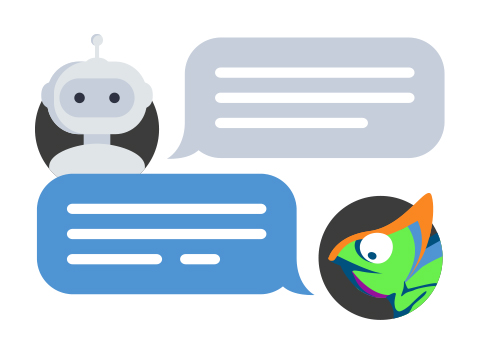Since OpenAI launched ChatGPT in December 2022, it has received a lot of hype, especially on LinkedIn. There are numerous examples in which the possibilities of ChatGPT are tested – it can generate not only entertaining, but also useful answers in certain use cases.
But what about possible applications in Facility Management? Can ChatGPT also be a useful tool for customer-specific use cases? Does it possibly even have the potential to revolutionize Facility Management and help companies optimize their workflows and increase their efficiency?
We have tested ChatGPT and present our findings in this article.

But first, let’s explain what ChatGPT is all about. For this purpose, we asked ChatGPT to introduce itself in three sentences:
ChatGPT is an artificial intelligence-based chatbot built on OpenAI’s GPT (Generative Pre-training Transformer) model. It can be used to perform natural language processes such as text generation, text completion, and question answering, and has proven useful in many areas such as chatbot, virtual assistant, language translation, and content creation. It is usually driven by the input of text and subsequent processing by the model.
The text generated by ChatGPT adequately answers the question asked and fulfills its informational purpose. The AI can thus satisfactorily answer questions of a general nature without any problems and generates a comparatively acceptable text in the process.
What about possible applications in Facility Management? We have taken a closer look at one use case.
In Ticketing, employees or customers send inquiries that need to be categorized and then forwarded to the responsible department for further processing. With its ability to categorize unstructured text, ChatGPT could potentially be used in Ticketing. An AI with a good understanding of language and context could automate this categorization and forwarding and even provide the user with initial suggestions for solutions in the form of a chatbot.
That’s why we tested exactly this categorization in our FUTURE.LAB using inquiries from real use cases. This involved the categorization of about 10,000 tickets into 27 predefined categories such as “malfunction heating, cooling, ventilation” or “malfunction of safety equipment.”
To automate the categorization, we developed a program that ChatGPT uses to assign each ticket to the appropriate category based on its content.

The results showed that ChatGPT assigns most tickets to the correct category. However, it must be precisely formulated according to which criteria the assignment should be made. For example, ChatGPT initially incorrectly assigned the ticket “A cup fell in the kitchen and it was not cleaned properly” to the category “coffee machine/water dispenser”, although there is no problem with the coffee machine. The correct category would be “cleaning and trash.”
If you concretize the prompt and have ChatGPT categorize tickets by responsibilities for fixing the problem (“Which category is responsible for the problem?”), the ticket will be placed in the correct category:

ChatGPT is an impressive tool that can certainly be used for some use cases in Facility Management and automate many processes in the future. At the same time, human verification of the results is essential to date to rule out errors, especially for very specific use cases.
OpenAI’s ChatGPT is definitely a game changer – but still a game changer in the making. We are looking forward to the fourth version and whether these problems will be solved by the development team.